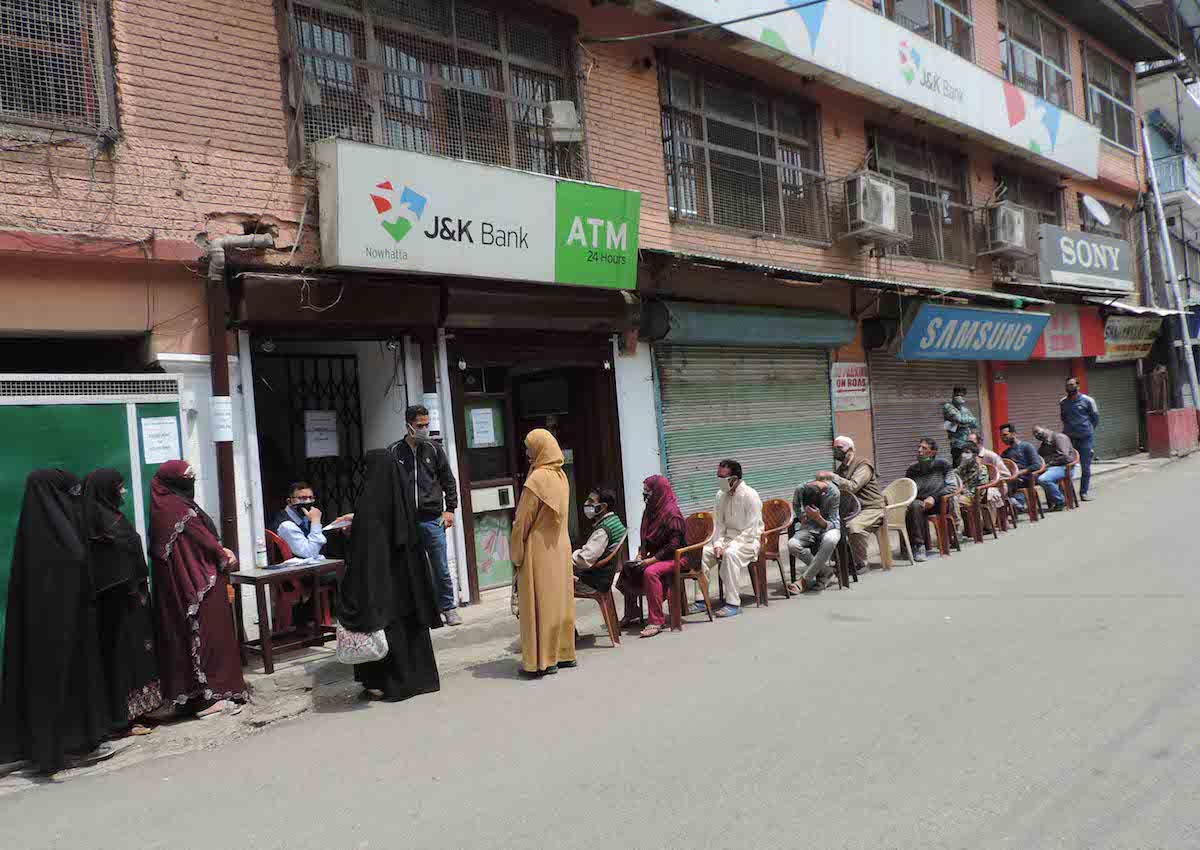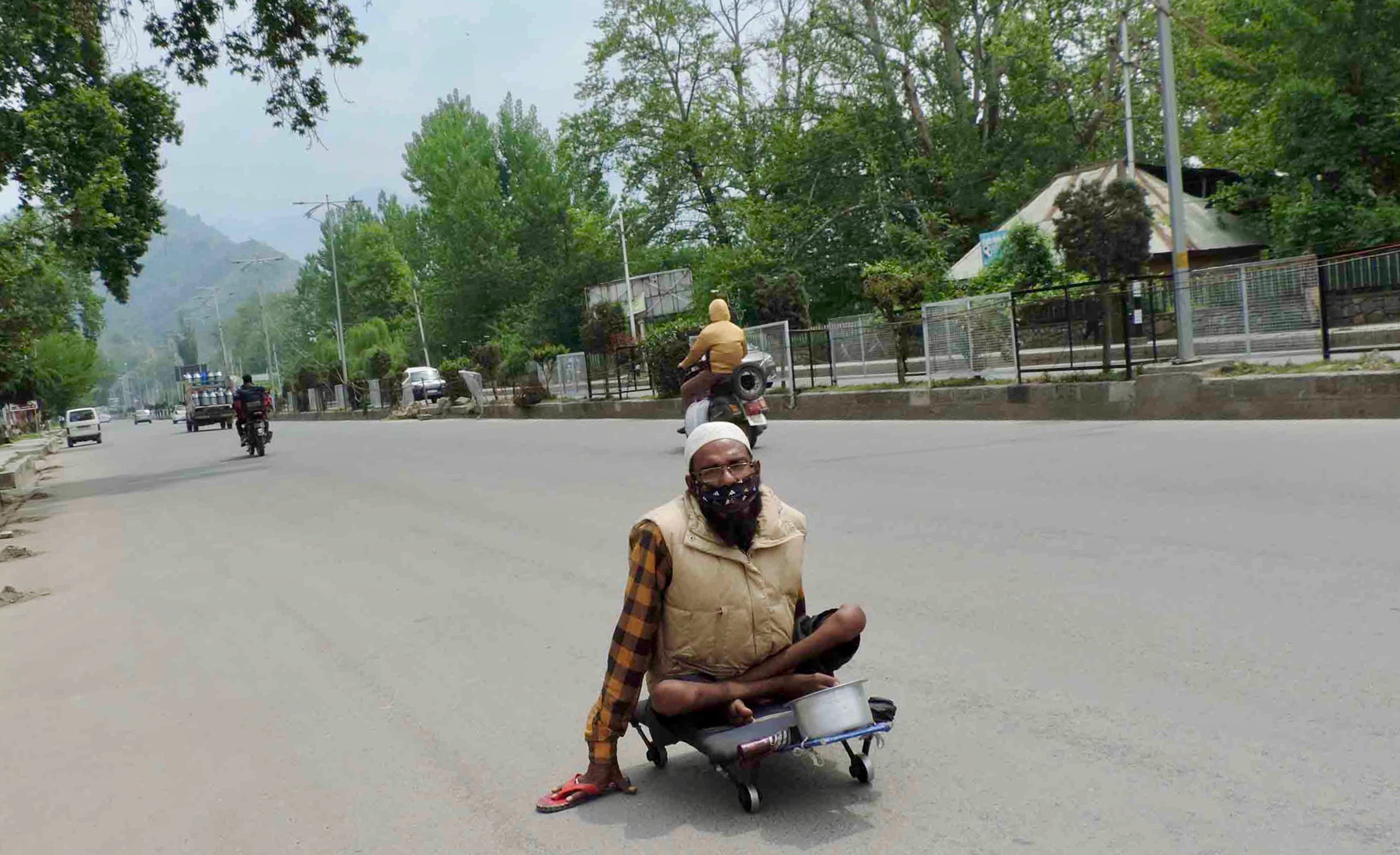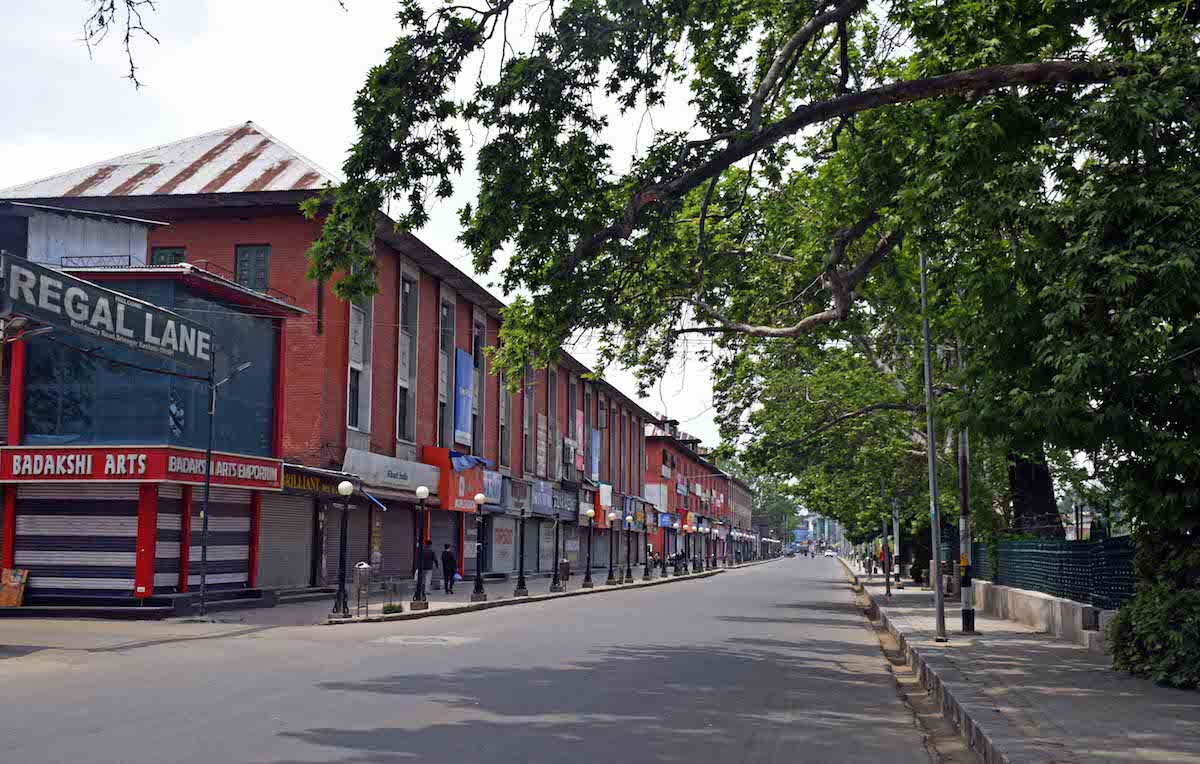Gathering triggered by panic shopping prior to brief lockdowns is a cause of concern, writes Zahoor Malik

KL Image: Bilal Bahadur
Lockdowns are not something new for the people in Kashmir. They have been witnessing lockdowns, curfews and general strikes since early 1990s. The frequent disruptions in normal life have badly dented the Kashmir economy from time to time.
Till 2019, the general strikes and curfews were connected with politics and security. Since 2020, the lockdowns were exclusively enforced for health reasons like in the rest of the world.
Kashmiris are now used to such changing and dramatic situations, but many believe that cause of concern is the panic for shopping and stocking essentials before the lockdowns start. The shopping and stocking is done on such a scale as if the shops are not going to reopen again and that there will be left nothing in the market. There were two short lockdowns, so far.
The Last Lockdown
The government announced a lockdown from 7 PM on April 29, to 6 AM on May 3, as a precautionary measure to prevent further spread of Covid-19. While the lockdown was technically for two working days and a holiday but the government announcement led to increased movement on roads and markets. Shops selling meat, chicken, vegetables, fruits, groceries, medicines and the like witnessed more rush on April 29. The same was the scene on petrol pumps. There were reports of price hikes by several shopkeepers particularly those selling vegetables and fruits. Even the prices pre-fixed by the government are allegedly being violated by mutton and chicken sellers within the city.

The pre-lockdown shopping-related rush in markets also led to traffic jamming on roads. Walking through the Maharaj Bazar area did not give any indication that people were concerned about the surging coronavirus cases. Huge rush of people buying particularly fruits and vegetables and most of them without masks or poorly fitted masks was an open invitation for the virus. Even as the cops were trying to intervene but given the attitude of people their efforts too seemed not that successful. The traffic jamming on the road was particularly making the pedestrian movement very difficult. Some of the customers were seen telling each other that given the rising graph of coronavirus cases, more and lengthy lockdowns cannot be ruled out in near future. This despite the fact that Prime Minister Narendra Modi had told the state governments and union territory administration to use lockdown as last resort to fight coronavirus.
A Back Breaking History
Lockdowns, curfews and general strikes had already broken the backbone of the economy in Kashmir since the early 1990s.

There were frequent general strikes and curfews in the 1990s, 1991, 1992, 1993,1994 and 1995. But the 1996 assembly polls and formation of the National Conference government in the state, helped to improve the situation. For several years the normal life was back on track and so was the economy. But in 2008 the toppling of Ghulam Nabi Azad led the government on the issue of giving some land on lease to the Amarnath Shrine Board completely changed the scene. It gave birth to a trend of months-long general strikes on various political and security issues.
Some people believe that calling months-long general strikes since 2008 were avoidable and they badly hit the economy. According to them, the separatist leadership thrust these strikes on people making them to suffer immensely on all fronts. The government was taken by surprise due to the magnitude of 2008 general strikes but it slowly learned how to deal with it.
The administration learnt an important lesson that people get exhausted by the hartals and finally resume their work, as they have no other option. The role of the security grid to keep the people indoors during such situation became an important tool for the administration.
Then the general strikes and curfews in 2010 and 2016 helped the government officials better to deal with such situations. The confidence gained during those times was used when curfew was imposed on August 5, 2019 coinciding with the abrogation of article 370. Massive troop deployment for months together and communication blockade helped the administration to deal with a challenging situation and come out of the difficult time.
A Changed Situation
The situation has reached to a point now that there is no strike on the incidents, which used to paralyse normal life earlier.
There is no possibility of political strikes at present but more lockdowns on health fronts cannot be ruled. Interestingly, the shattered economy was trying to be slowly back on rails in the beginning of this year. The sudden jump in coronavirus cases took everybody by surprise.

The situation in Kashmir is not as bad as that of Delhi, UP, Maharashtra. But carelessness by people can worsen the situation further. Even as a large number of people have started following the necessary procedures in government offices and other places, there is still a sizeable number, who do not want to care. Their carelessness is a cause of concern for their families and other people.















